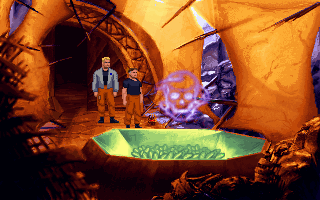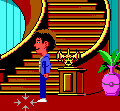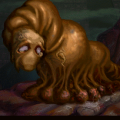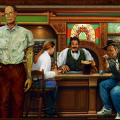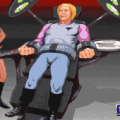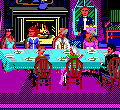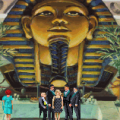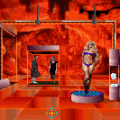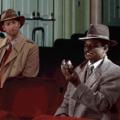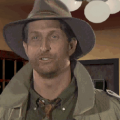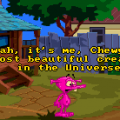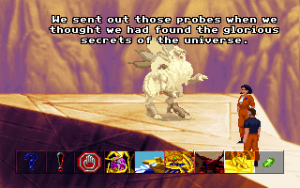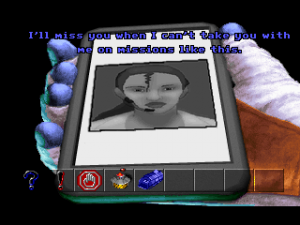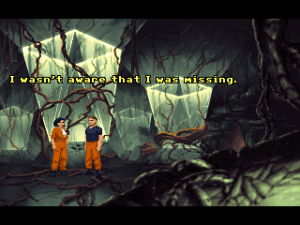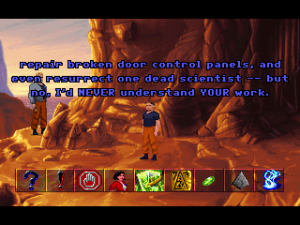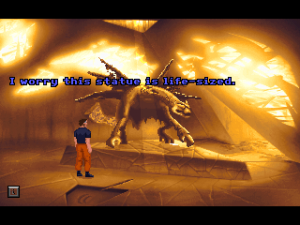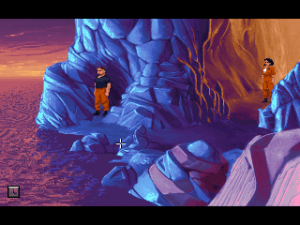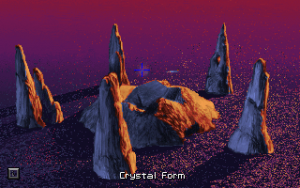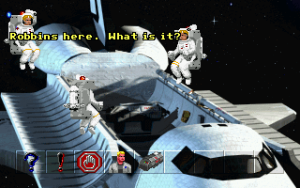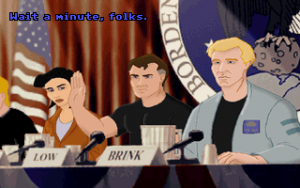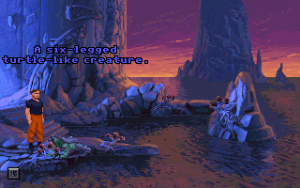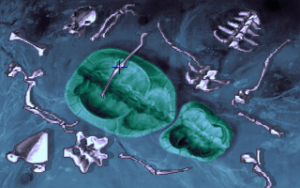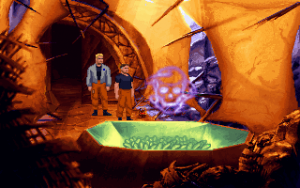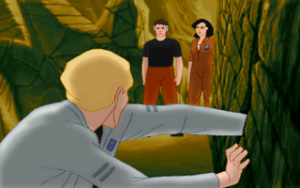by Ryan Woodward
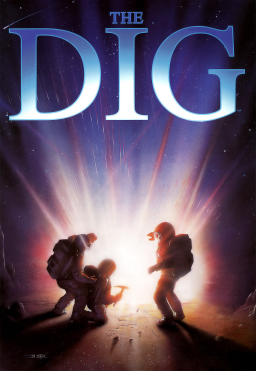
American DOS Cover
Development Hell: a damnation that not even Vergil would attempt to guide anyone through. Mired in horrifying staff changes and also dreaded partial or complete rewrites, many games never see the light of day. Many that do are mere shadows of their potential glory or disfigured carcasses that flail around, desperately trying to convince you that they were once beautiful and worth playing. The Dig is one of those games. It managed to escape its purgatory, and while not horrible, once you learn some of its history, one can see it could have been much, much more.
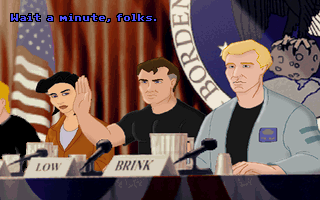
The Dig (DOS)
The Dig had much going for it to set the expectations of gamers high. It was being produced by LucasArts and carried the name of Steven Spielberg, no less. The concept was based partially off of an idea he had for his Amazing Stories TV show from the mid-80s. A mixture of the classic 50s sci-fi movie The Forbidden Planet, where a scientific team explores a seemingly deserted planet, and the drama The Treasures of Sierra Madre, where three miners slowly turn on each other out of greed, it was deemed too expensive to be produced, and thus shelved for a couple years. That is, until Spielberg brought his idea for The Dig to LucasArts in 1989, to eventually be turned into a computer game. It was, however, not released until 1995.
Nowadays, people are accustomed to long development times, but even today, six years was a pretty long time for a game to take to get into our hands. During this time, LucasArts released screenshot after beautiful screenshot, scintillating adventure game fans with the unexplored ruins and caverns of an alien world. It went through four designers and three total overhauls, and the final product bears only some resemblance to its initial concept. The basic premise was similar through most of the project. There is an asteroid heading towards Earth, dubbed “Atilla”, which is potentially large enough to wipe out the entire human race. A scientific team is assembled to fly into space, set some nuclear charges and destroy the approaching rock. It’s superficially similar to other asteroid disaster movies like Deep Impact and Armageddon, but The Dig has a substantially stronger sci-fi bent. Once the team reaches Atilla, they begin to dig in order to plant the explosives. However, a strange geometric formation (the first of many) is noticed shortly after the second charge is placed. After mucking around with it, they inadvertently activate some mysterious bit of alien technology, which shoots them off to another planet at some distant point across the galaxy. The team’s mission is, of course, to escape, in the process explore this dead planet, and uncover the secrets of the civilization that have apparently fled to another plane of existence, leaving behind ruins… and their ghosts, creepily enough.
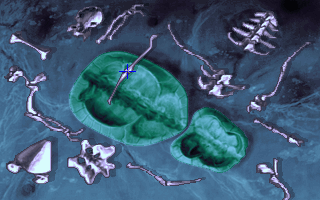
The Dig (DOS)
You control Boston Low, a retired astronaut and the leader of the mission. You might recognize his voice from Terminator 2, or later episodes of The X-Files. That’d be because he is voiced by Robert Patrick. He’s a pretty flat character, but the things you do make him kind of likable. He has a fondness for lots of terrible, terrible puns and one-liners. Press Ctrl+B and Low will flex his muscles, providing some humor if one of the other characters is around. He’s definitely not as intelligent as the other crew members, as they really don’t take him seriously.
Low is joined Maggie Robbins, a reporter assigned to the crew who possesses a vast aptitude for linguistics, which allows her to decode and translate the bits of alien language scribbled about. She often seems bored at having to talk to Low, yet for some reason, an inexplicable romance between the two is developed at the end of the game.
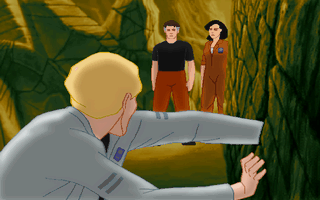
The Dig (DOS)
The trio is rounded out with Ludger Brink, a German archaeologist and geologist. He sounds boring, but he is quite easily the most interesting character in the game. Early on, he is digging a hole (you do such things on alien worlds, you know) and the ground collapses into the main nexus, sending him to an early demise. But after a bit of exploration, Low and Robbins stumble onto an alien “museum” and discover what they term “life crystals”, which are one of the driving elements of the plot. Low cracks one of the bad boys open on Brink, which resurrects him. But the crystals induce madness, paranoia, and hostility due to their addictive properties, and Brink alienates himself from Robbins and Low, preferring to attempt to build a machine that will produce even more of precious minerals. It’s here where the conflict between the team becomes enraged, if their initial bickering weren’t enough, and where the story parallels The Treasures of Sierra Madre. One of the best scenes in the game occurs when Brink, reaching for one of the green crystals in a crevice, gets his hand caught when the earth shifts. How do you free him? In one of the most macabre scenes in the game, you sever his hand with a jawbone you dug up.
The Dig is quite a bit different than LucasArts’ typical fare. Although Boston interacts with the other crew members, they are really the only characters in the game, outside of the alien apparitions. Other than the bits of humor, it’s also fairly stern and somber, a stark contrast to the likes of Monkey Island or even Full Throttle. The dialogue is provided by veteran sci-fi author Orson Scott Card, but it’s straightforward and not at all remarkable.
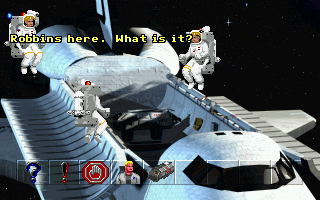
The Dig (DOS)
Beyond the narrative, the interface and puzzle design is a bit a break from the norm. The single icon cursor and general lack of hotspots makes the world seem more barren than it really is, and makes everything feels slightly simplified. While you have an expansive inventory of scientific instruments and random tools found around the planet, a sizable portion of the puzzles involve fiddling with various alien machines and such, rather than typical inventory usage. The focus is largely on the look, the feel, and the atmosphere, which almost puts it more in the league of something like Myst. Of course, it’s not quite as pretty – like other SCUMM games of the time, it runs at VGA resolutions, where Myst and similar games ran in SVGA, and were much crisper. But the graphic design itself is still remarkably inspired.
Still, The Dig succeeds in what it sets out to accomplish, and that’s to immerse you in a strange, fantastic alien world. The scenery is dominated by blues, purples, and greens in addition to the dingy brown of the surface of the planet, which is aesthetically quite gorgeous. The primary theme for the alien technology is a strange marriage of geometric and organic shapes; many puzzles have you focusing on patterns of geometry or assembling shapes. Light manipulation is a primary aspect of the alien technology as well, and you’ll find yourself often traversing convenient “light bridges” to get across the game. Much of the world itself lies in ruins, and there is very little animal life left. There are plants that feed off of electricity, and glow when you touch them. A lot of the technology you encounter is in disrepair, and this provides many of the puzzles.
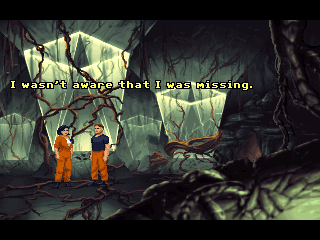
The Dig (DOS)
Some of these scenarios are actually pretty damn cool. At one point you come into possession a bomb. A bit later, you wander by a lake inhabited by a Loch Ness monster-type monster. It consumes some turtle-like creature, and coughs up the bones. Nearby are fossilized remains of the same creature. Using your adventure gamer logic, you rebuild the creature according to the fossil, but add a little explosive surprise, and resurrect it with the life crystals. Ol’ Nessie eats the turtle-thing, and a few seconds later, KABLOOIE! Pool’s safe, kids. Also, there is a section in which you must control the moons of the planet using two silver and gold rods. The goal is to create an eclipse in just the right spot. It is a pretty cool instance in any game, being able to move whole planets, but unfortunately this takes a lot of trial and error, and walking back and forth. There are some other nice touches, too. Low also has a PDA called the “Pen Ultimate”, which is used to communicate with the rest of the crew, in addition to having a playable clone of Lunar Lander.
The Dig isn’t exactly LucasArts’ most popular adventure game, which, as noted, is largely because it’s such a departure, both in structure and theme. That shouldn’t be held against it, though, because it’s still a gorgeous game with some thoughtful design, beautiful visuals, and a haunting electronic orchestral soundtrack. If there’s any legitimate area where it stumbles, its due to the limits of the technology. The Dig, along with Full Throttle, were the first LucasArts’ adventures to take full advantage of the CD medium. The extensive full motion video consists of some decently rendered computer graphics, but they’re all terribly compressed, with lots of pixelated artifacts that detract from their beauty.
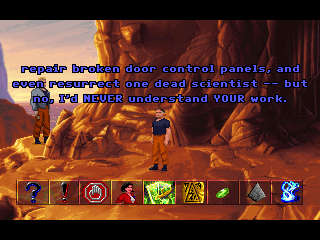
The Dig (DOS)
The Dig is also kind of a short game, which may have potentially had to do with its development cycle, as the game was scrapped and redesigned multiple times. The first version was led by Noah Falstein, with some aid by Hal Barwood. The two later went on to develop Indiana Jones and the Fate of Atlantis. Although the general idea of three characters marooned on an alien planet is the same, many elements are substantially different. Instead of taking place in the present, it was set in the future, after humanity has discovered faster-than-light travel and colonized various other planets. An exploration team is sent to explore an newly discovered planet named Ozymandias which appears to be desolate, but of course, nothing is quite as it seems. The team is lead by one Major Tom, and the player would have been able to choose from the two other crewmates – a Russian engineer name Terasov and an Austrailian biologist (and somewhat sexy lady) named Fox. When the team sets down, Major Tom goes missing, and so the remaining team begins to look for him, stumbling upon alien ghosts in the process. At one point, the two characters would have had an argument and split, with the other occasionally popping in to provide necessary aid.
Although the initial design documents have surfaced on the web, very little of the game seems to have actually gone into development. And so, after eighteen months, Brian Moriarty, the designer of Beyond Zork (Infocom) and Loom (LucasArts) took over after Falstein left the project. He scrapped everything that had been done, and his version became the zygote of the final experience. The three main characters were changed to Low, Robbins and Brink, as they were in the final game. In this version was a fourth main character, Toshi Olema, a Japanese businessman who was funding the project on the condition that he could join the team.

The Dig (Moriarty’s version)
This version would have been very violent, as Toshi was meant to die horribly in an acid-shower in a cavern. (An “aciddent”, if you will.) Not only that, but it was filled with lots of scientific lingo, the sort of technobabble that sci-fi fans would likely enjoy the hell out of, but would scare the mass audience that the LucasArts’ executives were hoping to attract. A lot of the art styling came from this version in terms of color and general theme for the environments. It used a new engine called Storydroid, which supported additional visual effects, had a more traditional multi-icon interface. Unfortunately Moriarty left as the project became too stressful and he was unhappy with the direction that management was taking the project.
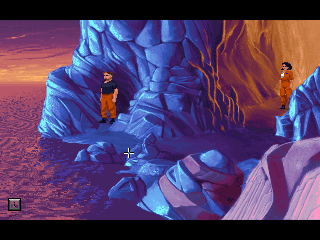
The Dig (DOS)
Dave Grossman, who worked on Monkey Island and Day of the Tentacle, led the project for a few months, then finally, Sean Clark came in. He swapped it back over to the SCUMM engine, moved to the simple one-click interface, and eradicated much of the background story and technical stuff. This is the version of the game we got. While obviously stripped down, at least it made to the market, which can’t be said of the other versions.
A novel based on The Dig was also written by noted sci-fi author Alan Dean Foster, who is known for his Humanx Commonwealth series, as well as adaptations of other sci-fi properties like Alien, Star Wars, Transformers, and many, many others. Although it doesn’t follow the events of the game precisely, it’s follows most of the same points, and helps expand on the back story a bit, especially when it comes to the mysteries of the alien civilization. It’s still based on Sean Clark’s design though, so it’s probably not quite as in depth as Moriarty’s version. The only major point of note is that they actually reveal the name of the alien planet – Cocytus, after a river in the underworld from Greek mythology, mentioned in both Dante’s The Divine Comedy and Milton’s Paradise Lost.
Links:
The Dig Museum Has tons of information, including the script to the original version.
The Dig Pre-release pictures Includes articles, artwork and other remnants of the early versions.
The Dig on Steam Get it cheap here.
